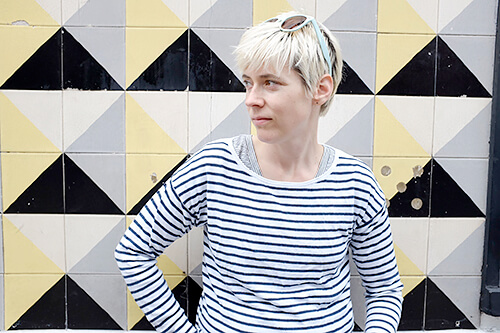Lois Bielefeld's trajectory starts in Milwaukee, WI. She received her BFA in photography from Rochester Institute of Technology afterwards relocating to New York City until 2010. Most recently her and her wife relocated to the San Francisco Bay area. Besides photography, she feels passionate about traveling, hiking, swimming, urban gardening and bicycling adventures. Her work is in the permanent collections of the Leslie-Lohman Museum of Gay and Lesbian Art in New York City, the Museum of Wisconsin Art, and The Racine Art Museum in Wisconsin. Bielefeld has shown at The International Center of Photography in New York City, The Museum of Contemporary Photography in Chicago, the Museum of Wisconsin Art, The Charles Allis Art Museum, ArtStart, Portrait Society Gallery, UW-Milwaukee, UW-Parkside, UW-La Crosse, and Walker's Point Center. In 2015 Lois had a ten-week artist residency in Bourglinster, Luxembourg through the Museum of Wisconsin Art and the Luxembourg Ministry of Culture. Bielefeld is represented by Portrait Society Gallery in Milwaukee.
Statement:
Lois Bielefeld is a series based artist working in photography, audio, video, and installation. Her work continually asks the question of what links routine and ritual to the formation of identity and personhood. Weeknight Dinners, New Domesticity, and Celebration examine the connective ties people share within our private and public spaces with food, perceptions of home, and community. Reaching through 5 1/2 yards, Reaching Across 8497 miles is a collaboration with interdisciplinary artist Nirmal Raja exploring identity and belonging within Milwaukee, WI.
